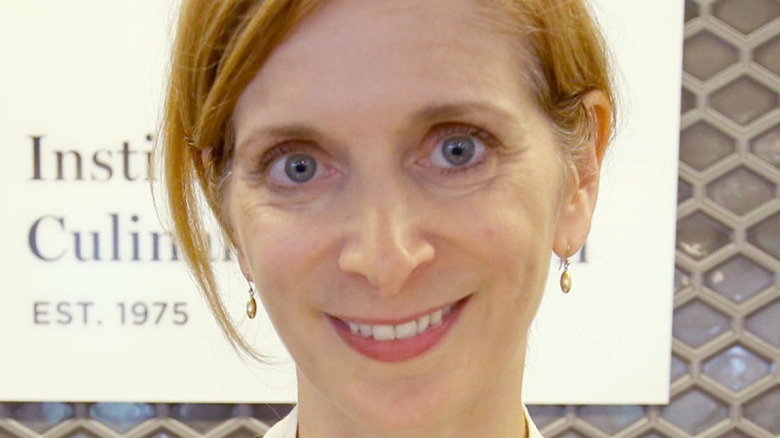The Eclectic Way Melissa Clark Categorizes Her Cutting Boards
Having multiple cutting boards that serve different purposes is not a new concept. The USDA recommends this practice especially as it relates to separating where raw meats are sliced and diced from where fruits and vegetables are chopped up to avoid cross-contamination. But food writer Melissa Clark revealed to the New York Times during a tour of her kitchen that she has a rather unique way of organizing her cutting boards.
Clark shared that she has three cutting boards on which cutting onions and garlic is allowed, while the rest of her cutting boards are part of a no zone for onions and garlic chopping. While the organizational use of her cutting boards may seem a little excessive at first, it really isn't. Onions and garlic have strong smells and flavors that tend to stay on your fingers, and those aromas and tastes can easily convey to your cutting boards and anything else you cut up on them.
Label your cutting boards
Clark uses the example of cutting up strawberries and biting into them only to have a taste of garlic permeate your mouth instead of what should be profound sweetness. But it isn't just onions that deserve their own cutting board. Fish should have its own cutting board as well. This is because of the oils that they leave behind, which can also be a little smelly and unpleasant regardless of cleaning and can easily transfer to other foods.
But how can you tell cutting boards apart from one another if they are made from the same material? Buying non-porous plastic cutting boards in an array of colors is one way; however, you can also label them with either a Sharpie or a label maker if you are skittish about writing on your boards. This way there is no confusion when other household members go to use one and it also helps to keep things organized in your kitchen — a win-win.

